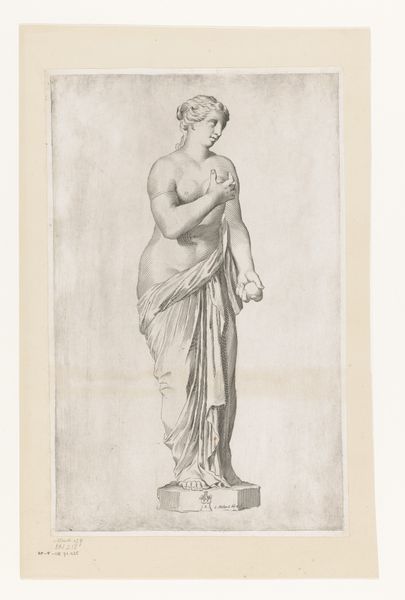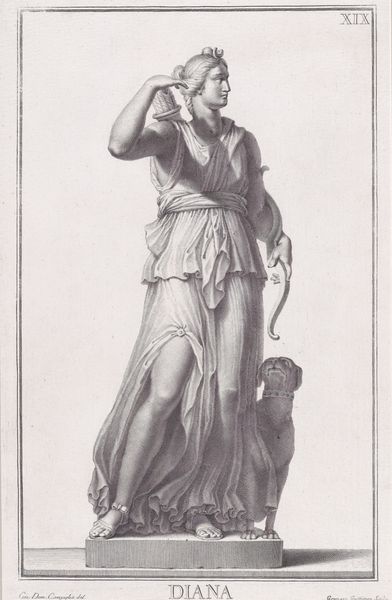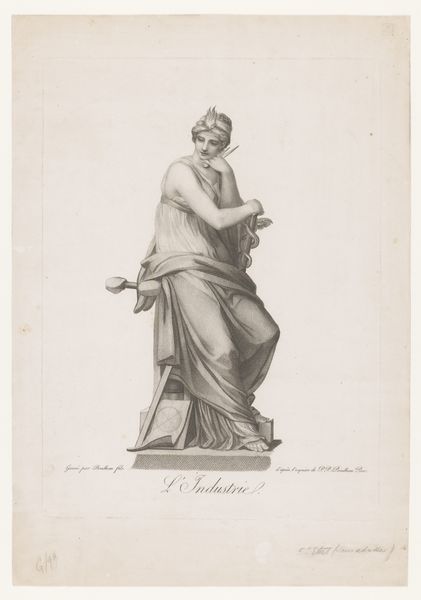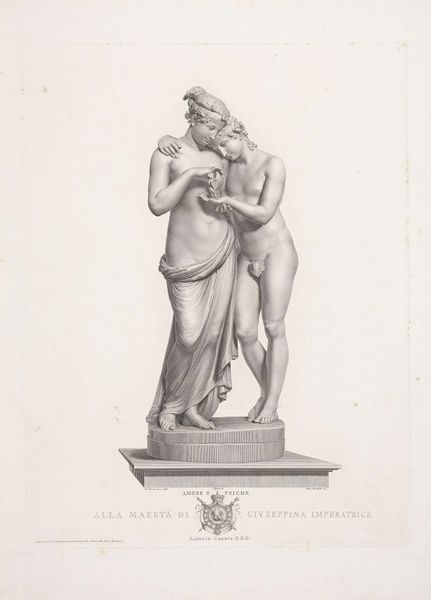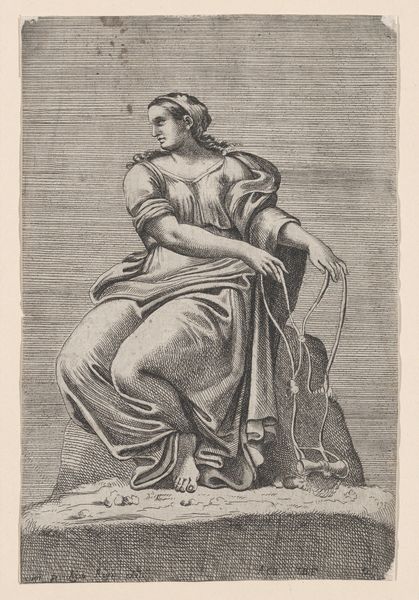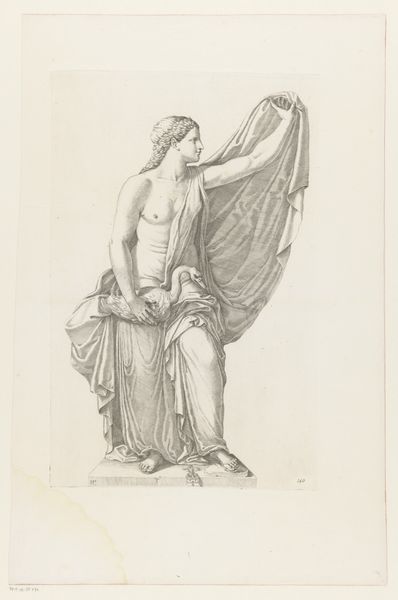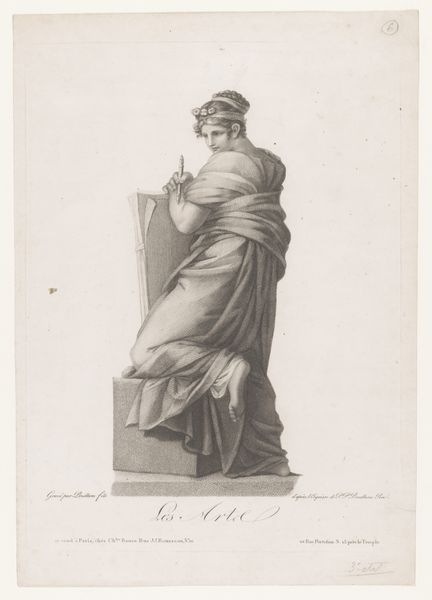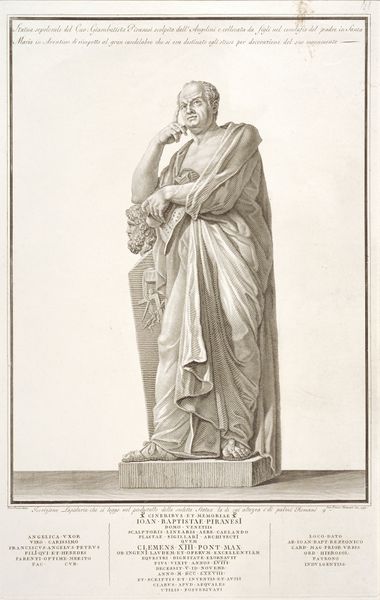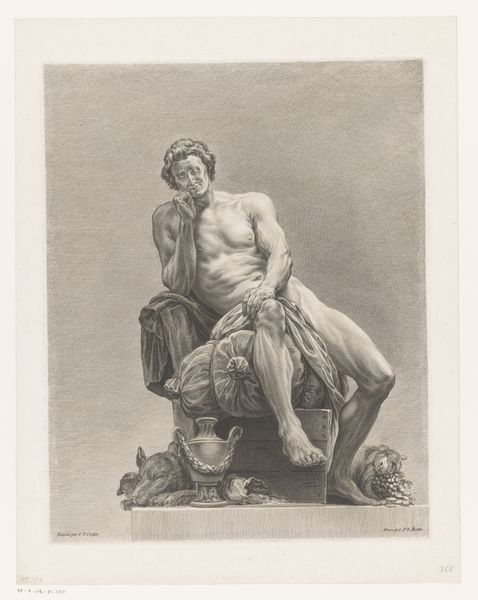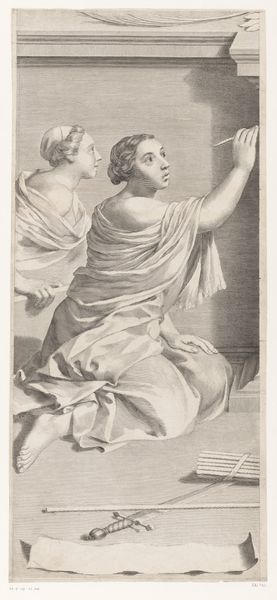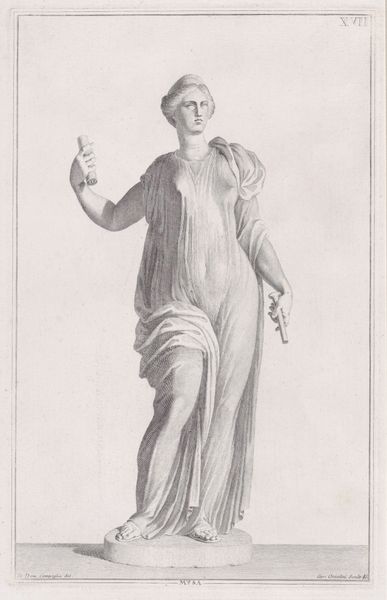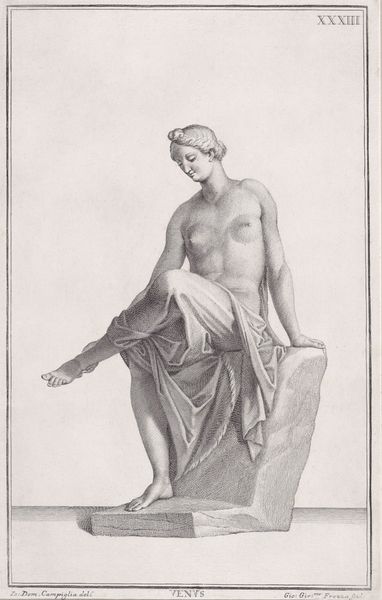
print, graphite, engraving
#
portrait
#
neoclacissism
#
allegory
# print
#
charcoal drawing
#
graphite
#
portrait drawing
#
history-painting
#
graphite
#
engraving
Dimensions: height 372 mm, width 277 mm
Copyright: Rijks Museum: Open Domain
Curator: Jean Prud'hon created this engraving, titled "Landbouw," sometime between 1810 and 1823. Editor: It's remarkable how much tonal range Prud'hon achieves with what appears to be solely graphite and engraving techniques. The light catches the figure's draping beautifully. Curator: Agreed. Prud'hon, working within the Neoclassical style, was interested in allegorical representations. This work clearly draws on classical themes of idealized beauty and virtue tied to agriculture. It raises interesting questions about the social importance of agrarian labor at the time. What labor practices are being implicitly elevated? Who is this figure truly representing? Editor: The linear precision gives it a decidedly formal air. Look how the engraved lines define the planes of her face and the fall of the garment, almost like a sculptural study. There’s a deliberate classicism that removes the subject from any specific time or place. She is simply 'Agriculture'– a timeless, pure concept. Curator: Exactly, and the figure's almost regal pose invites inquiry into the role agriculture played within the social hierarchy. The inclusion of ripe wheat connects agricultural practice with productivity and affluence—this symbolic relationship provides crucial insights to the politics of labor in the era the work was produced. I’m also curious to know whether it was initially commissioned by some governmental institution intended to encourage production or trade, or what was its role as visual object beyond its formal elegance? Editor: And yet, the cool tonality and restrained emotion suggest a contemplative ideal. The slightly averted gaze directs us to consider not merely physical toil, but a dignified, almost serene relationship with the land. Notice the laurel wreath upon her brow, it further emphasizes agriculture as elevated work with the virtues of honor and merit. Curator: Right, the figure and the landscape are rendered within the framework of an idealized and industrious state; yet, I wonder about those whose daily lived reality in agrarian spaces did not quite reach such an idealized image. How does that shape our understanding of the piece? Editor: Looking closely has helped me notice its quiet confidence. A celebration of an ancient ideal that echoes through the ages. Curator: For me, analyzing its form while also considering the history of labor involved in the image provides a far more vivid glimpse into that era.
Comments
No comments
Be the first to comment and join the conversation on the ultimate creative platform.

